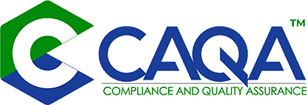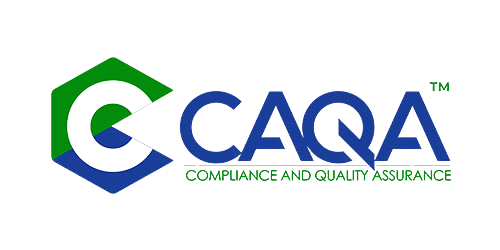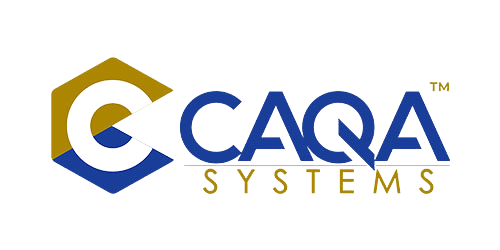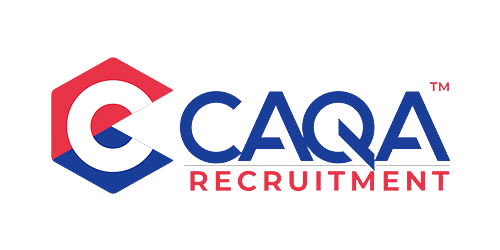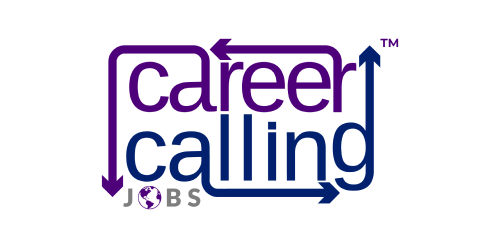In a startling revelation that has profound implications for Australia's $10 billion vocational education and training (VET) sector, compliance experts are warning that a well-documented psychological phenomenon known as the Dunning-Kruger effect is creating a perfect storm of regulatory risk that threatens to undermine the integrity of the entire system. This cognitive blind spot—sometimes called "the lemon juice effect" after its most infamous real-world example—is leading training providers to make catastrophic compliance mistakes with absolute confidence, often realising their error only when facing severe regulatory consequences.
The phenomenon gets its nickname from perhaps the most remarkable case of misplaced confidence in criminal history. In 1995, McArthur Wheeler robbed two Pittsburgh banks in broad daylight without any disguise, smiling directly at security cameras because he genuinely believed he was invisible. His logic? He had covered his face with lemon juice, reasoning that since lemon juice works as invisible ink, it would render his face invisible to cameras. When police showed Wheeler the security footage during his arrest, he was genuinely shocked, muttering, "But I wore the juice!"
While this story might seem merely amusing, compliance specialists warn that an alarming number of registered training organisations (RTOs) are effectively "wearing the juice" when it comes to regulatory compliance—operating with dangerous levels of confidence despite fundamental misunderstandings of their obligations under the Standards for Registered Training Organisations 2015 and related legislation.
THE SCIENCE BEHIND THE DANGER: Understanding the Dunning-Kruger Effect
The 1995 bank robbery case sparked the curiosity of Cornell University professor David Dunning, who, alongside graduate student Justin Kruger, conducted groundbreaking research culminating in their 1999 paper, "Unskilled and Unaware of It." Their research identified a critical cognitive bias: people with limited knowledge or skills in a specific domain not only make mistakes but also lack the metacognitive ability to recognise their own incompetence. In other words, they don't know what they don't know.
Dr. Malcolm Richards, a leading expert in VET compliance psychology, explains: "The Dunning-Kruger effect creates a dangerous double-bind where the least knowledgeable individuals often have the highest confidence in their compliance understanding. This isn't simple arrogance—it's a cognitive blind spot where people can't see the extent of their own knowledge gaps until they've developed enough expertise to recognise what they're missing."
The effect manifests as a pattern where confidence peaks early during the learning journey, when someone knows just enough to feel informed but not enough to understand the complexities and nuances of a domain. This "peak of mount stupid," as it's sometimes called in scientific circles, is followed by a "valley of despair" when individuals begin to recognise how much they don't know, before gradually building toward genuine competence and appropriate confidence.
For RTOs navigating Australia's complex regulatory landscape, this pattern creates a perfect storm of compliance risk. Organisations most vulnerable to regulatory action are often those most convinced of their compliance expertise, creating a dangerous blind spot that leaves them exposed to significant sanctions.
COMPLIANCE CATASTROPHES: Real-World Examples from the VET Sector
This investigation has identified numerous cases where the Dunning-Kruger effect has contributed directly to devastating compliance failures across Australia's vocational education sector. While the organisations remain anonymous due to ongoing regulatory actions, the patterns are clear and concerning.
In one emblematic case, a medium-sized RTO specialising in business qualifications maintained absolute confidence in its assessment systems despite multiple internal audits revealing serious deficiencies. The organisation's compliance manager, with minimal formal training in VET regulation, repeatedly dismissed concerns from external consultants, insisting that their "innovative approach" to assessment validation was superior to standard practices recommended in the regulator's guidance materials.
"They were absolutely certain they were not just compliant but exemplary," recalls Jessica Thornton, the consultant who attempted to alert them to the risks. "When I highlighted specific clauses in the Standards they were violating, they would respond with confident but fundamentally incorrect interpretations that no reasonable reading of the regulations would support. It was classic Dunning-Kruger—they knew just enough terminology to feel expert but not enough to recognise the dangerous gaps in their understanding."
When ASQA eventually conducted a compliance audit, the organisation received adverse findings against 8 of the 8 standards audited, with the regulator noting that the assessment systems showed "fundamental misalignments with the principles of competency-based assessment." The organisation was genuinely shocked by the findings, having operated for years with complete confidence in their approach.
Another case involved a construction training provider that developed an elaborate but fundamentally flawed approach to recognition of prior learning (RPL). Despite having no staff with formal compliance qualifications, the organisation had absolute confidence in its "streamlined" RPL process, which inadvertently violated multiple regulatory requirements. When questioned by industry peers about potential compliance risks, the CEO reportedly dismissed concerns, stating, "We've been doing it this way for years without any problems."
When regulatory action eventually came, the organisation faced severe sanctions that threatened its survival. "They weren't being deliberately non-compliant," explains RTO compliance specialist Michael Chen. "They genuinely believed they were operating correctly. Their confidence wasn't just misplaced—it actively prevented them from seeing the risks that were obvious to outside experts."
THE PERFECT CONFIDENCE STORM: Why VET Compliance Is Especially Vulnerable
Industry experts identify several factors that make the vocational education sector particularly susceptible to Dunning-Kruger-related compliance failures:
-
Regulatory Complexity: The Standards for RTOs 2015, alongside the Australian Qualifications Framework, training packages, and other legislative requirements, create a regulatory landscape of extraordinary complexity. This environment makes it easy for providers to develop a partial understanding while missing critical nuances.
-
Terminology Traps: The VET sector's specialised vocabulary creates an illusion of knowledge when basic terms are mastered, leading compliance staff to overestimate their comprehensive understanding. Knowing terms like "assessment validation" or "training and assessment strategy" doesn't necessarily translate to understanding their full regulatory implications.
-
Compliance Echo Chambers: Many RTOs operate in isolation or within networks of similarly inexperienced providers, creating echo chambers where misconceptions are reinforced rather than challenged. Without exposure to genuine expertise, organisations can collectively reinforce incorrect interpretations.
-
Historical Success Fallacy: The fact that an organisation hasn't faced regulatory action yet is often misinterpreted as evidence of compliance, rather than recognised as potential good fortune or the result of not yet being thoroughly audited. This false validation reinforces dangerous confidence.
-
Software Shield Illusion: Many RTOs invest in compliance management software and mistakenly believe that using these systems guarantees compliance, not recognising that technology only systematises their existing practices, whether compliant or non-compliant.
The combination of these factors creates what compliance strategist Dr. Eleanor Zhang calls "a perfect confidence storm" in vocational education compliance. "The Dunning-Kruger effect isn't just an interesting psychological curiosity in this context," Zhang emphasises. "It's a serious threat to regulatory integrity and ultimately to the quality of vocational education in Australia."
BEYOND THE JUICE: Protective Strategies for RTOs
Leading compliance experts recommend several strategies to help RTOs guard against the Dunning-Kruger effect in their compliance practices:
1. Practice-First Learning Approaches
Traditional compliance training often begins with abstract theory and regulatory text, an approach that research shows is largely ineffective in combating the Dunning-Kruger effect. More effective approaches start with practical scenarios that reveal knowledge gaps before introducing the relevant regulations.
"When we start with a challenging compliance scenario and ask an RTO to solve it, they quickly discover what they don't know," explains compliance educator Sarah Jameson. "This creates a receptive mindset for learning that simply presenting the regulations rarely achieves. The key is to trigger the realisation of knowledge gaps rather than assuming people already know they need to learn."
Progressive RTOs are implementing "compliance laboratories" where staff tackle realistic scenarios under supervision, receive immediate feedback, and discover their own blind spots before real regulatory consequences arise.
2. External Validation Systems
To combat the echo chamber effect, leading RTOs are implementing rigorous external validation processes where compliance approaches are regularly reviewed by independent experts without financial incentives to maintain the status quo.
"External validation is to compliance what external auditing is to finance," notes regulatory advisor Thomas Williams. "It introduces objective scrutiny from someone who doesn't share your organisation's assumptions and who has broader exposure to industry best practices and regulatory interpretations."
These validation processes are most effective when structured as collaborative learning opportunities rather than simple pass/fail judgments, creating space for genuine knowledge transfer rather than defensive responses.
3. Compliance Competency Frameworks
Forward-thinking RTOs are developing structured competency frameworks for compliance roles, establishing clear expectations for the knowledge and skills required at different levels of responsibility. These frameworks make knowledge gaps visible and create developmental pathways for compliance staff.
"Many organisations put people in compliance roles without clear competency expectations," explains organisational development specialist Dr. Rebecca Torres. "A proper framework makes it clear that compliance expertise is developed progressively, not acquired instantly, which helps combat the false confidence that drives Dunning-Kruger effects."
These frameworks typically include specialised training requirements, mentoring relationships with experienced compliance professionals, and regular capability assessments to ensure genuine skill development rather than simply accruing time in the role.
4. Structured Reflection Practices
Regular structured reflection exercises help compliance teams develop metacognitive awareness, the ability to recognise the limitations of their own knowledge, which research identifies as the primary antidote to Dunning-Kruger effects.
Effective approaches include "pre-mortem" exercises where teams imagine potential compliance failures and work backward to identify vulnerabilities, "blind spot mapping" where teams explicitly document areas of uncertainty, and regular case study reviews of regulatory actions against other providers to identify parallels with their own practices.
"Structured reflection creates the metacognitive space to recognise knowledge gaps," notes psychologist Dr. Jennifer Adams. "The key is making these reflections concrete and systematic rather than leaving them as vague aspirations to 'learn from experience.'"
5. Progressive Disclosure Auditing
Traditional mock audit approaches often inadvertently reinforce Dunning-Kruger effects by allowing organisations to prepare specifically for known audit focuses. More effective approaches use progressive disclosure methods where compliance teams don't know which aspects will be examined until the audit begins.
"When you know exactly what will be audited, you can create a false sense of competence by preparing just those elements," explains former regulatory auditor Michael Patel. "Progressive disclosure audits reveal genuine compliance capability rather than prepared performances, creating more accurate awareness of organisational compliance maturity."
These approaches more accurately simulate actual regulatory audits and create more authentic learning opportunities than highly choreographed compliance reviews.
REGULATORY IMPLICATIONS: How Authorities Can Address the Knowledge Gap
The Dunning-Kruger effect has significant implications for how regulatory bodies like ASQA approach their oversight responsibilities. Experts suggest several strategies that could help the regulator address the cognitive biases undermining compliance:
-
Educate Before Enforcing: Recognizing that many compliance failures stem from unknown knowledge gaps rather than deliberate violations, regulators could prioritise educational interventions before punitive actions, particularly for first-time or technical non-compliance issues.
-
Metacognitive Assessment Tools: Developing and promoting self-assessment tools that help RTOs accurately evaluate their compliance knowledge, rather than their compliance confidence, could help organisations identify areas requiring development.
-
Progressive Regulatory Engagement: Implementing a more graduated approach to regulatory oversight, where new providers receive more intensive guidance during their early operations, could help establish stronger compliance foundations.
-
Compliance Capability Building: Expanding beyond the current focus on compliance outcomes to also consider compliance capability—the systems, knowledge, and processes that enable sustained compliance—could create more resilient compliance cultures across the sector.
-
Transparent Case Studies: Publishing detailed, anonymised case studies of common compliance failures could help providers recognise patterns that might otherwise be invisible within their own operations.
These approaches acknowledge that genuine improvement in sector-wide compliance requires addressing not just what RTOs do but also how they think about compliance, specifically, how they assess their own knowledge and capabilities.
From Lemon Juice to Learning Organisations
The psychology behind McArthur Wheeler's lemon juice disguise might seem far removed from the sophisticated world of vocational education regulation, but the underlying cognitive mechanisms create similar vulnerabilities across contexts. When RTOs operate with confidence disproportionate to their actual compliance knowledge, they create significant risks for themselves, their students, and the integrity of Australia's qualification system.
The path forward requires recognising that compliance capability isn't simply a matter of hiring the right people or implementing the right systems—it requires developing organisational cultures that actively guard against the natural human tendency toward overconfidence in areas of limited knowledge.
The most successful RTOs are transforming into genuine learning organisations where compliance is approached with appropriate humility, knowledge gaps are identified and addressed systematically, and external perspectives are actively sought rather than defensively rejected.
As one compliance expert summarised: "In the end, the most dangerous thing in VET compliance isn't not knowing something—it's not knowing that you don't know. The organisations that thrive in this complex regulatory environment aren't those with perfect compliance records but those with the metacognitive awareness to recognise their limitations and address them before they become regulatory issues."
For Australia's vocational education sector to fulfill its critical role in developing the nation's workforce capabilities, both providers and regulators must recognise and address the cognitive biases that undermine effective compliance. Only by moving beyond "wearing the juice" can the sector achieve the regulatory maturity necessary to support its essential educational mission.
